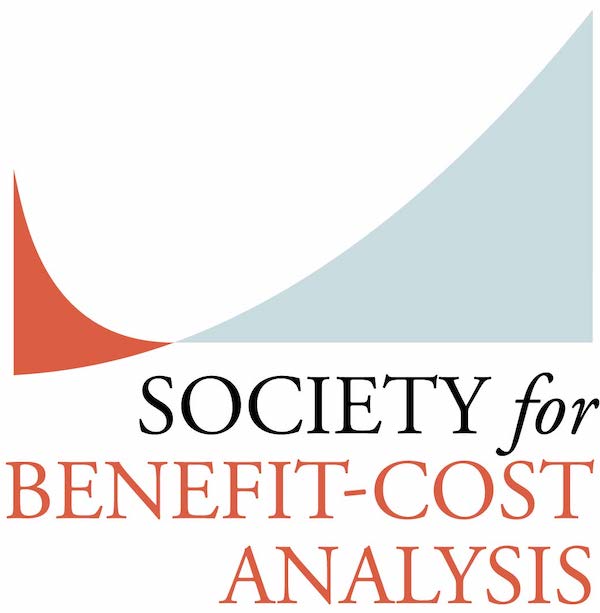On Balance: Whither Benefit-Cost Analysis in Trump’s Second Term?
 The views presented in On Balance are those of the authors and do not represent the views of the Society, its Board, or its members.
The views presented in On Balance are those of the authors and do not represent the views of the Society, its Board, or its members.
This post is part of a series on President Trump’s deregulatory record and what we might expect in the new administration.
With the volatility and uncertainty of the first few weeks of the Trump administration, it is hard not to feel overwhelmed. One way to cope with information overload is to focus on issues where one has particular knowledge and interest. For me, that’s the regulatory process and benefit-cost analysis. In that vein, this post reviews some of the most consequential regulatory directives, and concludes that, while there is room for disagreement on details, the general requirement to base regulations on an understanding of benefits and costs remains intact.
Biden EOs on Regulation Rescinded
On his first afternoon in office, President Trump signed Executive Order (EO) 14145, which rescinded dozens of President Biden’s EOs on regulatory practice and policy. That was expected. EOs can only directly bind the executive branch; presidents can issue them without input from other branches or the public, and they can revoke them just as easily. Indeed, on his first day in office four years ago, President Biden revoked Trump’s first term regulatory orders.
Important for benefit-cost analysis, Trump has retained President Clinton’s EO 12866, which has guided regulatory review within the executive branch since 1993, and requires agencies to support significant regulations with an assessment (and full analysis for larger rules) of benefits and costs. As I’ve written in the Journal of Benefit-Cost Analysis, the durability of that order is quite remarkable!
Several of President Obama’s regulatory orders also remain intact, but not Biden’s EO 14094, which among other things, changed the EO 12866 definition of “significant” regulations such that fewer rules were subject to the requirement to prepare an “assessment of the potential costs and benefits of the regulatory action” and to Office of Management and Budget (OMB) review (§3(f)(4)). The now-revoked EO 14094 had also increased the threshold for rules requiring a full regulatory impact analysis from $100 million to $200 million in annual benefits or costs (§3(f)(1)).
Recent Guidelines on Regulatory Impact Analysis Revoked
Biden’s EO 14094 had also directed OMB to revise Circular A-4 on regulatory impact analysis, which OMB did in November 2023. At the end of his second week in office, Trump directed OMB to revoke the 2023 revisions and reinstate the 2003 version of the Circular. Both the 2003 and 2023 versions were subject to peer review, as required by law. However, I think the Trump administration could make a colorable case that, because the 2023 peer review did not support some of the significant changes included in the final, it is justified in returning to the previously peer-reviewed 2003 version without additional review. For more on Circular A-4, see a series of working papers by former SBCA presidents and JBCA editors based on their comments on the revisions.
The return to the prior guidelines means, among other things:
-
Agencies must present domestic benefits of regulations as their primary analysis, and when appropriate, should present global benefits separately;
-
Agencies are not required to consider behavioral biases, either as a justification for regulating or as a factor in designing regulatory approaches (though nothing precludes such considerations);
-
Agencies are not encouraged to weight regulatory benefits according to income, and have only brief guidance on considering distributional impacts of regulations; and
-
Agencies should estimate benefits and costs with at least two discount rates (a private rate of 7% and a social rate of 3%) and may conduct sensitivity analysis using higher and lower rates.
Since the effective date of the revised Circular was January 2025 for final rules, the differences in analytical practice are unlikely to have affected completed regulatory decisions. However, agencies may need to reanalyze not-yet-final rules that were proposed after March 2024 using the 2003 guidelines.
Very Different Approach to Energy and Environmental Issues
Trump has issued several EOs related to energy, the environment, and climate change. EO 14154, “Unleashing American Energy,” contains several directives relevant to benefit-cost analysis, including:
-
A focus on “economic and national security and military preparedness,” which may preclude a global lens, and a directive to report global effects separately to “prioritize the interests of the American people”;
-
An emphasis on “provid[ing] opportunity for public comment and rigorous, peer-reviewed scientific analysis”;
-
Elimination of any considerations beyond the “relevant legislated requirements,” and prohibition on using “methodologies that are arbitrary or ideologically motivated”;
-
Dissolution of the Interagency Working Group on the Social Cost of Greenhouse Gases (IWG) and withdrawal of all associated guidance;
-
Direction to the EPA to issue new guidance on the social cost of carbon (SCC), including possibly eliminating the SCC calculation from federal permitting and regulatory decisions.
Focus on Deregulation
An overarching policy goal of this administration is smaller government, and the controversial Department of Government Efficiency (DOGE), headed by Elon Musk, is leading that charge. On February 19, Trump signed an order on implementing DOGE. Among other things, it directs agencies to initiate a process to rescind “unlawful regulations and regulations that undermine the national Interest,” including those “that impose significant costs upon private parties that are not outweighed by public benefits.” The order reinforces EO 12866 (mentioning it five times) and directs agencies to consult with DOGE and OMB on new regulations “as soon as practicable.”
EO 14192, signed on January 31st, expands Trump’s rescinded 2017 EO 13771 imposing a 2-for-1 regulatory budget. The new EO directs agencies to “identify at least 10 existing regulations to be repealed” for every new regulation issued. Under OMB’s guidance on the previous EO 13771, only significant new rules counted as new, but agencies could offset them by removing non-significant regulatory actions, which made this requirement manageable. Both the old and the new EOs include a more binding requirement that agencies must identify at least a dollar-for-dollar offset for the costs of new regulations; for FY2025, the EO requires “that the total incremental cost of all new regulations, including repealed regulations…shall be significantly less than zero.”
How this new order is interpreted and implemented will be key to the role of benefit-cost analysis. Like Trump’s 2017 order, EO 14192 only mentions the costs of regulations. However, OMB’s guidance at that time reinforced the importance of assessing the benefits as well as the costs of regulatory and deregulatory actions in implementing the order. As noted above, none of the flurry of orders so far remove EO 12866, which requires benefit-cost analysis.
More Regulations Subject to Benefit-Cost Analysis
EO 14192 reinstates a 2018 memorandum of agreement between the Treasury Department and OMB regarding OMB’s review of tax regulations, reversing a Biden administration memorandum that had exempted the IRS from requirements for conducting benefit-cost-analysis and regulatory oversight. As tax regulations are increasingly usedto achieve policy outcomes, rather than just codify the tax code, this requirement may lead to improved IRS analysis and outcomes.
Similarly, an EO signed on February 18 titled “Ensuring Accountability for All Agencies” would, for the first time, subject independent regulatory agencies–like the Securities and Exchange Commission, the Federal Trade Commission, and the Consumer Product Safety Commission–to the review and analysis requirements of EO 12866. Independent regulatory agencies have historically based their regulations on less rigorous benefit-cost analysis than their executive counterparts, so this requirement may lead to improvements in analytical tools and regulatory outcomes.
Bottom Line for Benefit-Cost Analysis
The flurry of executive activity has created great uncertainty on many fronts. When it comes to benefit-cost analysis, however, none of Trump’s early actions appears to walk away from long-standing principles. There is room for discussion on appropriate discount rates, the proper scope of analysis, how to consider distribution of impacts, etc., but benefit-cost analysis appears to retain a central role in regulatory decisions, at least for now.
